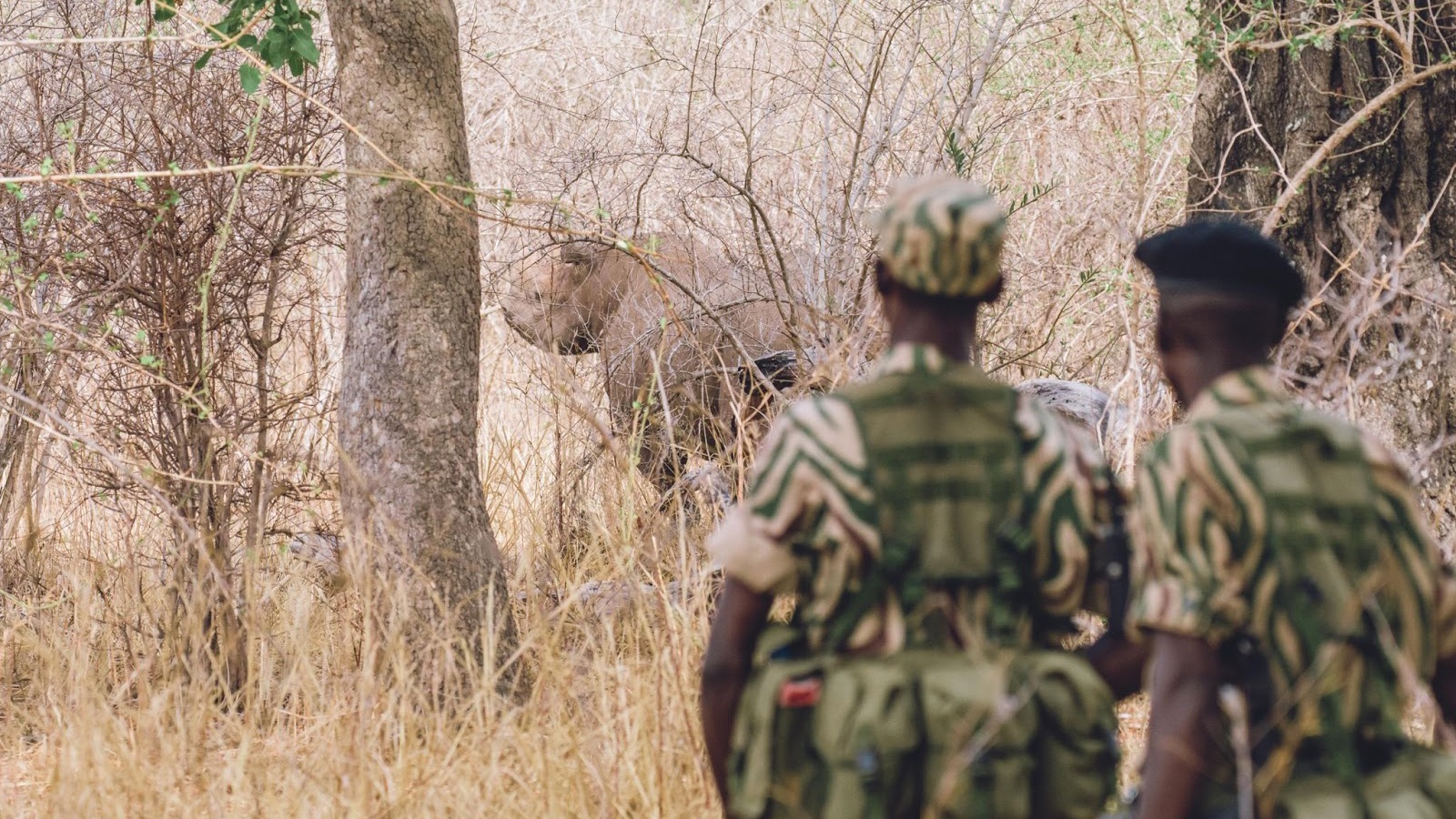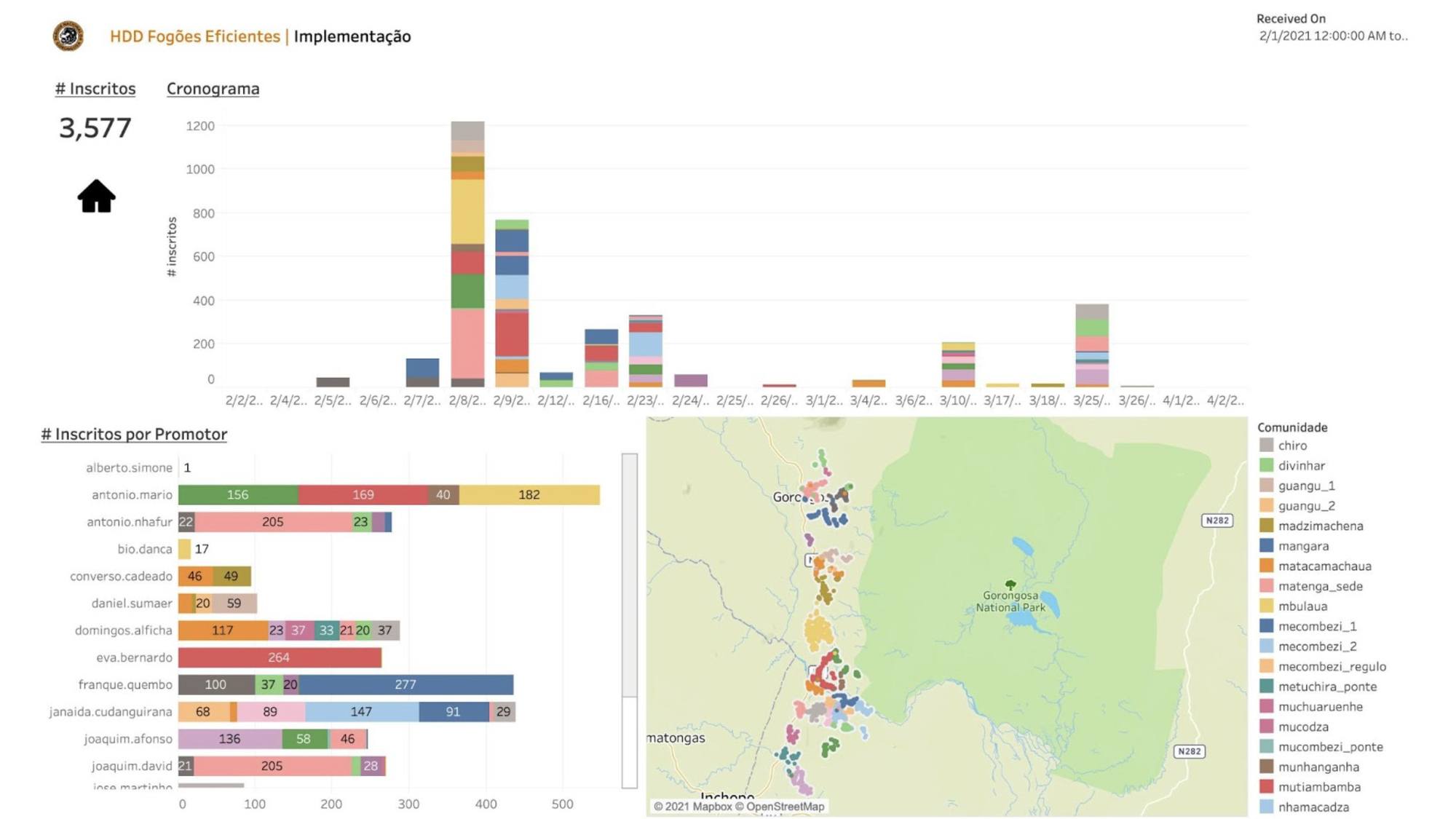Unlocking the power of data for wildlife conservation: An alliance between EarthRanger and Tableau Foundation
Editor's note: This article originally appeared in Vulcan news.
Rhino subadults are a lot like human teenagers: tracking and predicting their behavior can be difficult.
In Zambia’s North Luangwa National Park, rangers study the map on their screen to see if there are any places they haven’t checked. They’re searching for six-year-old “teen” Chilunda, a critically endangered black rhino, missing for five months in the park’s rhino sanctuary. Rhinos are under intense pressure from poaching and habitat loss. Rangers crisscross the area daily, making sure Zambia’s once-extinct and only recently reintroduced population of black rhinos are safe. But they haven’t been able to find Chilunda.
After months of searching the sanctuary—a pristine wilderness that’s double the size of Chicago—they pull up their Tableau dashboard. Fed by data compiled from EarthRanger, a wildlife management and protection tool, the rangers discover an area unchecked. After more than 150 days without a sight, the rangers find Chilunda the next day.
“It took one presentation of that map from Tableau with EarthRanger data and everyone knew where to look,” said Ed Sayer, the program manager at Frankfurt Zoological Society’s North Luangwa Conservation Programme.
Park rangers becoming data pioneers
These days, protected area managers and rangers are also big data pioneers. Troves of historical and real-time information from tracked assets like animals, vehicles, helicopters, hidden cameras, and anti-poaching teams are at their fingertips. The data is incredibly valuable for conservation work, but its vastness can overwhelm wildlife managers and strain their limited time and resources.

Photo: Mana Meadows
EarthRanger creates easy access to this data for conservation workers by combining it in a continuously updated map. Developed by Vulcan Inc., a Seattle-based company co-founded by Paul G. Allen of Microsoft and his sister Jody Allen, the free software system is used in more than 130 conservation areas across 34 countries. Finding Chilunda is just one of the many ways that EarthRanger is protecting people and wildlife. The tool also aids with endangerment issues like poaching, illegal logging, and human-wildlife conflict in iconic landscapes—from the Serengeti and Maasai Mara National Reserve to Washington State's Olympic Peninsula.
When EarthRanger was first built, it provided users with a comprehensive view of everything happening within their conservation area. But it missed the ability to expand and explore data through charts, tables, and reports that organizations needed to glean important insights and take action.
“Protected area managers and rangers kept telling us that they were collecting the data and using it to plan patrols or respond to poaching incidents,” said EarthRanger Director, Jes Lefcourt. “But they also needed the ability to look deeper into the data and conduct more elaborate analysis in order to become a more data-driven organization.”
The EarthRanger team didn’t have to look far to fill this gap. Across town, they knew Tableau could supercharge the way conservationists, rangers, and reserve managers use, analyze, and understand their data. Through a partnership with Tableau Foundation, Tableau is now directly embedded into EarthRanger, providing analysis and reporting functions to all users. Since the collaboration began, 200 people from 40 conservation organizations are now creating custom Tableau reports and dashboards to transform how they solve conservation problems.
“Tableau is designed to make vast amounts of data visible and actionable,” said Neal Myrick, Global Head of Tableau Foundation. “It’s exciting to see the platform being used to bring together this critical data and enable the park rangers to drive innovative solutions to conservation issues. It’s taking data out of the typical, back-office setting and putting it in the hands of people who are on the ground, doing the work."
Empowering local communities and improving quality of life
Among one of the most biodiverse places on Earth, Gorongosa National Park in the heart of central Mozambique is perhaps Africa’s greatest wildlife restoration story. Decimated by the country’s 16-year civil war, the park rebounded by balancing the needs of wildlife and people. While EarthRanger helps keep wildlife and people safe, Tableau makes it easier for them to explore and manage the data needed to empower local communities and improve their quality of life.
In February, Gorongosa began a pilot project to provide community members with clean and efficient cookstoves, designed to reduce pressure on forests for fuel while bringing health and economic benefits to families. The park created several, real-time dashboards that track the project rollout. Some dashboards provide a general summary (e.g., the number of registrations per day), while others deliver more insightful analysis (e.g., where households are, an estimate of how long it takes to acquire firewood, and how many people are helping gather it). With this information, they better understand what pressures are put on the forest and where to focus future cookstove efforts that will improve life—for nature and people.

The cookstove program dashboard, developed in partnership with C-Quest Capital and Dimagi.
“A lot of people are disconnected from data when it's stuck in a spreadsheet on one person's computer,” said Stephen Pope, a consultant for Gorongosa National Park. “We're using Tableau as a powerful tool to bring access to data, improve the quality of work, and drive knowledge exchange at the park.”
Along with its cookstove program, Gorongosa has made significant investments in water, sanitation, and hygiene for communities in and around the park with support from donors such as the USAID. Although in very early stages, Pope and the team are developing a management dashboard to monitor the status of wells. Much like the dashboards seen during a power outage, Gorongosa hopes to share this real-time information with community and government stakeholders, ensuring people can access clean water after emergencies and avoid cholera outbreaks or spikes in other water-borne diseases. While these projects are both in their infancy, Pope says they are only just starting to scratch the surface in what the data reveals.
“Building a culture of data is a powerful pathway for progression at Gorongosa National Park,” said Pope. "Tableau and EarthRanger are making this culture possible and accessible through their integrated approach and actionable insights.
Securing a future for wildlife and people
While poaching continues to pose problems for protected area managers and rangers in North Luangwa, keeping the peace between people and wildlife is another growing challenge. As cities and farms expand their footprint, people and animals are now coming into direct contact at an alarming rate. From elephants raiding crops to crocodiles injuring fisherman, human-wildlife conflict is a global problem. Figuring out how these two groups can coexist will play a critical role in determining the future of wildlife.
“It’s very important for us to know where and what kind of human-wildlife conflict is happening because we need to work hard to support the communities impacted,” said Sayer. “If wildlife destroys their livelihoods, then they’ll see no value in wildlife.”
That’s why Sayer prioritized collecting this data using a suite of techniques and technologies including the conservation software SMART. EarthRanger combines these data, providing a real-time map of incidents as they occur. North Luangwa rangers and protected area managers are now adding Tableau visualizations which show them what conflicts they face and where they are happening. And since wildlife such as elephants are clever and adapt to intervention techniques, Sayer and team are also collecting data around what solutions do and do not work. Analyzing this information over time, they hope will show trends, guide tactics, and expose gaps that wouldn’t have otherwise been seen. Ultimately with EarthRanger, SMART, and Tableau, they can see exactly what’s happening on the ground and improve decision-making to benefit people and wildlife.
“EarthRanger and Tableau are invaluable tools,” said Sayer. “They are allowing us to learn, adapt, and ultimately enhance the hard-work of our rangers on the frontlines.”
Zugehörige Storys
Blog abonnieren
Rufen Sie die neuesten Tableau-Updates in Ihrem Posteingang ab.







